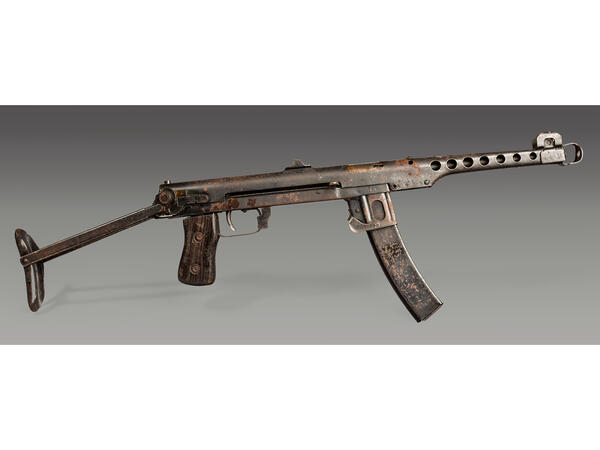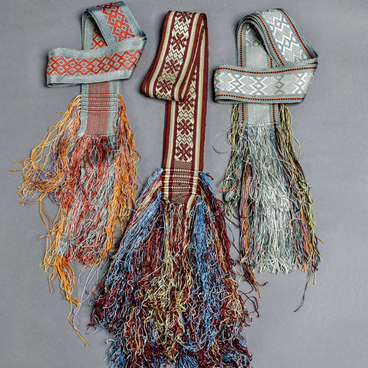The PPS, the Sudayev submachine gun, was developed by Soviet weapons designer Alexei Sudayev in 1942.
In 1942 a competition was announced for a lighter, more compact and cheaper submachine gun, which would not be inferior in its technical characteristics to the PPSh — a submachine gun designed by Georgy Shpagin. Famous designers Vasily Degtyarev, Nikolay Rukavishnikov, Sergei Korovin, Alexei Sudayev, and Shpagin himself participated in the competition. Sudayev’s model won the competition.
First submachine guns were field tested at Leningrad front in June 1942, and then production began at Sestroretsk weapon factory. During the blockade of Leningrad, batches of PPS were carried along the ‘road of life’ to arm the troops.
In late 1942, the submachine gun was officially adopted for service under the name of PPS-42. The next year an improved model under the name of PPS-43 was developed. The barrel and buttstock were shortened, the cocking handle, safety latch and shoulder stock were modified, and the barrel cover and receiver were combined into one piece.
Until complete break of the siege in January 1944 the Sestroretsk weapon factory produced 46.572 submachine guns of both versions. It was inexpensive to make and thanks to its simple design even women and teenagers could assemble it: the submachine gun consisted of stamped parts connected by welding and rivets. The PPS-43 consumed half the materials and three times less manpower than the PPSh-41.
This weapon was especially popular with scouts, paratroopers and tank crews because of its small size.
The Sudayev submachine gun M43 was produced from 1943 to 1945. After the war, in early 1950s it was gradually replaced by the Kalashnikov assault rifle. For some time rear and auxiliary units, internal and railway troops were armed with PPS. Moreover, some paramilitary guard units used the PPS until the end of the 1980s.
In 1942 a competition was announced for a lighter, more compact and cheaper submachine gun, which would not be inferior in its technical characteristics to the PPSh — a submachine gun designed by Georgy Shpagin. Famous designers Vasily Degtyarev, Nikolay Rukavishnikov, Sergei Korovin, Alexei Sudayev, and Shpagin himself participated in the competition. Sudayev’s model won the competition.
First submachine guns were field tested at Leningrad front in June 1942, and then production began at Sestroretsk weapon factory. During the blockade of Leningrad, batches of PPS were carried along the ‘road of life’ to arm the troops.
In late 1942, the submachine gun was officially adopted for service under the name of PPS-42. The next year an improved model under the name of PPS-43 was developed. The barrel and buttstock were shortened, the cocking handle, safety latch and shoulder stock were modified, and the barrel cover and receiver were combined into one piece.
Until complete break of the siege in January 1944 the Sestroretsk weapon factory produced 46.572 submachine guns of both versions. It was inexpensive to make and thanks to its simple design even women and teenagers could assemble it: the submachine gun consisted of stamped parts connected by welding and rivets. The PPS-43 consumed half the materials and three times less manpower than the PPSh-41.
This weapon was especially popular with scouts, paratroopers and tank crews because of its small size.
The Sudayev submachine gun M43 was produced from 1943 to 1945. After the war, in early 1950s it was gradually replaced by the Kalashnikov assault rifle. For some time rear and auxiliary units, internal and railway troops were armed with PPS. Moreover, some paramilitary guard units used the PPS until the end of the 1980s.



